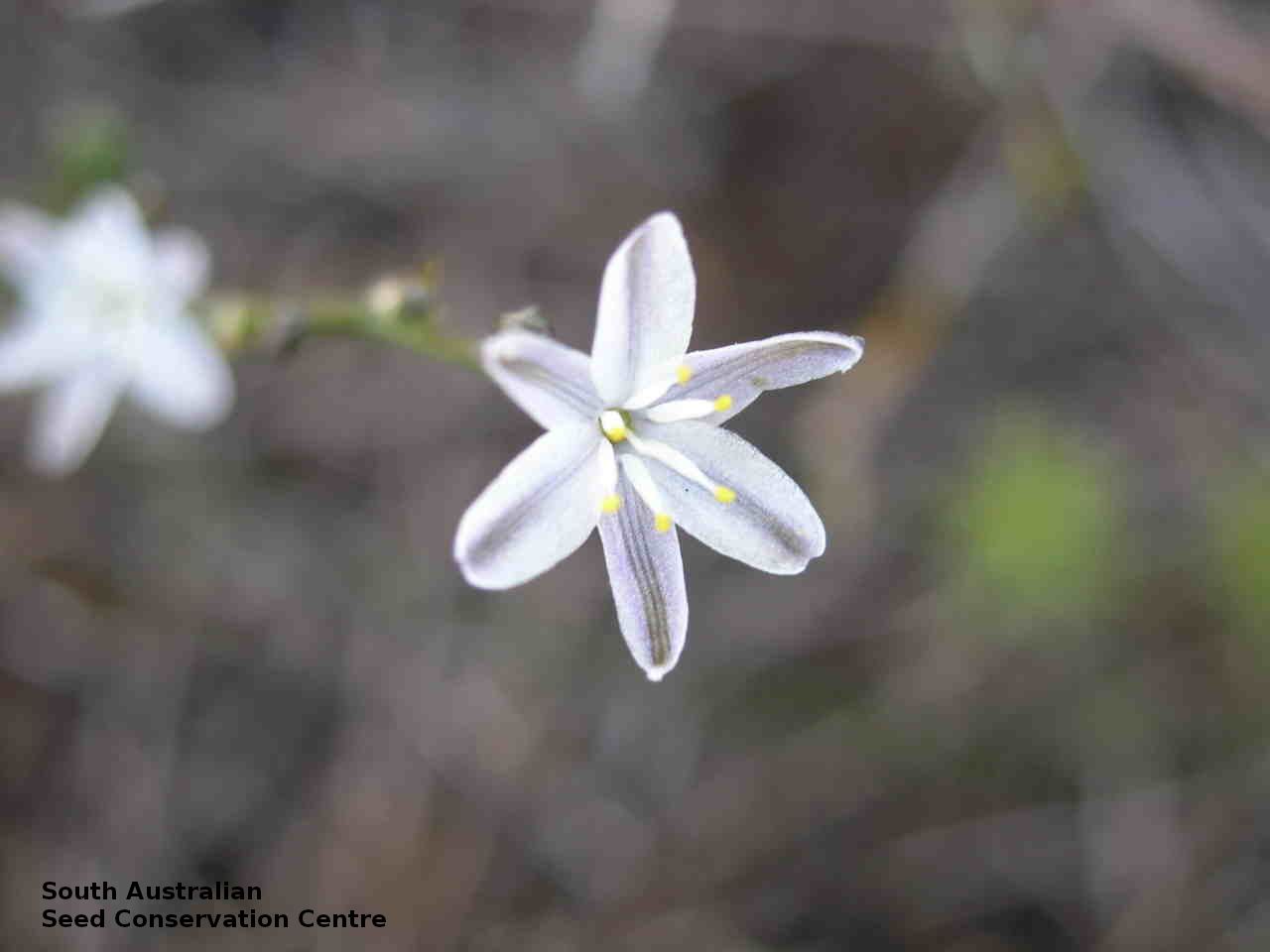










Botanical art
Prior names
Caesia parviflora, partly
Common names
Small Pale Grass-lily
Pale Grass-lily
Etymology
Caesia named after Federico Cesi (1585-1630), an Italian naturalist who is said to have been the first to discover the spores of ferns and whose name was Latinised as Caesius. Parviflora from the Latin 'parvus' meaning small and 'floris' meaning flower. Minor meaning smaller, referring to the subspecies shorter habit.
Distribution and status
Found only in the lower South-east in South Australia in damp open grassy areas in swamp and forest. Also found in New South Wales, Victoria and Tasmania. Native. Rare in South Australia. Rare in the other States.
Herbarium region: South Eastern
NRM region: South East
AVH map: SA distribution map (external link)
Plant description
Tufted, glabrous herbaceous perennial lily to 20 cm high, with long grass-like leaves and with a branching rhizome. Primary inflorescence branches widely divergent, often horizontal but ascending apically, with usually white but also blue or purple flowers. Flowering between October and December. Fruits are pale brown 3-lobed capsules. Seeds are globular black seed to 3 mm diameter with a tuberculate surface. Seed embryo type is linear fully developed.
Seed collection and propagation
Collect seeds between December and January. Collect mature capsules, those that are turning a pale straw colour and contain black seeds. Can collect individual capsules or break off the whole spike. Place the capsules in a tray and leave to dry for one to two weeks. Then rub the capsules gently by hand to dislodge the seeds. Use a sieve to separate the unwanted material. Store the seeds with a desiccant such as dried silica beads or dry rice, in an air tight container in a cool and dry place. From two collection, the seed viability was low to average, ranging from 25% to 40%.
| Location | No. of seeds (weight grams) | Number of plants | Date collected | Collection number Collection location | Date stored | % Viability | Storage temperature |
|---|---|---|---|---|---|---|---|
| MSB | 1,100 (1.3 g) | 50+ | 13-Dec-2007 | TST276 South Eastern | 60% |
Number of plants: This is the number of plants from which the seeds were collected.
Collection location: The Herbarium of South Australia's region name.
% Viability: Percentage of filled healthy seeds determined by a cut test or x-ray.